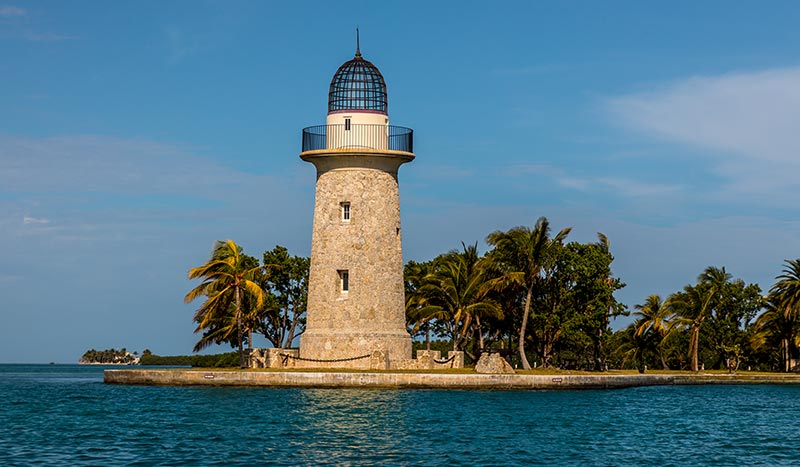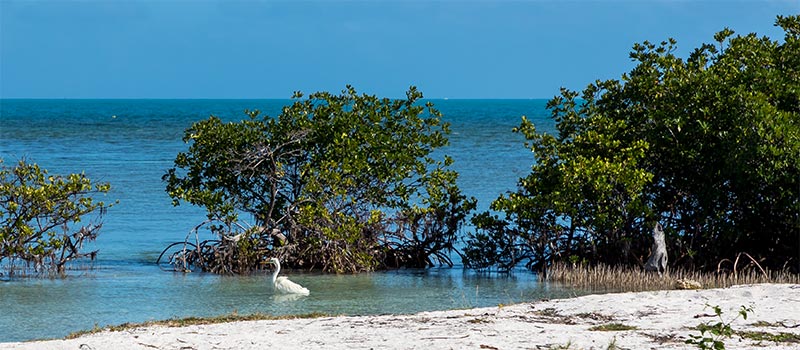
Celebrate Biscayne National Park's Anniversary
Robert DeckerEstablished on June 28, 1980, Biscayne National Park is the largest marine park in the National Park System and protects a rare combination of aquamarine waters, emerald islands, and fish-bejeweled coral reefs. Here too is evidence of 10,000 years of human history, from pirates and shipwrecks to pineapple farmers and presidents. Outdoor enthusiasts can boat, snorkel, camp, watch wildlife…or simply relax in a rocking chair gazing out over the bay. In the early 20th century the islands became secluded destinations for wealthy Miamians who built getaway homes and social clubs. Mark C. Honeywell's guesthouse on Boca Chita Key was the area's most elaborate private retreat, and featured a mock lighthouse.

If you are visiting for a day, you should sign up in advance for guided educational eco experiences with the Biscayne National Park Institute that can include sailing, snorkeling, paddling and exploring the islands. Programs range from a few hours to a full day, and highlight the park’s amazing wildlife, rich history, and awe-inspiring marine ecosystems. The true beauty of Biscayne National Park is that it offers a different experience for everyone. No matter what you're interested in, you can learn more about the habitats and history of the park.

Biscayne National Park is located just south of Miami in southern Florida. The park preserves Biscayne Bay and its offshore barrier reefs. Ninety-five percent of the park is water! The shore of the bay is primarily an extensive mangrove forest. The offshore portion of the park includes the northernmost region of the Florida Reef, one of the largest coral reefs in the world. Biscayne National Park is situated in a subtropical climate, which ensures sunshine year-round. Winters are normally dry and mild, with occasional fronts bringing wind and little rain. Summertime brings hot and humid weather with scattered afternoon thunderstorms.
The reefs have claimed ships from Spanish times through the 20th century -- with more than 40 documented wrecks within the park's boundaries. The park's islands were farmed during the 19th and early 20th centuries, but their rocky soil and periodic hurricanes made agriculture difficult to sustain.

The park protects four distinct ecosystems: the shoreline mangrove swamp, the shallow waters of Biscayne Bay, the coral limestone keys and the offshore Florida Reef. The shoreline swamps of the mainland and island margins provide a nursery for larval and juvenile fish, mollusks and crustaceans. The bay waters harbor immature and adult fish, seagrass beds, sponges, soft corals, and manatees. The keys are covered with tropical vegetation including endangered cacti and palms, and their beaches provide nesting grounds for endangered sea turtles. Offshore reefs and waters harbor more than 200 species of fish, pelagic birds, whales and hard corals. The park also has a small population of threatened American crocodiles and a few American alligators.
The Biscayne National Park Poster measures 13″ x 19″ and is an original work by Robert Decker. Posters are printed on “Conservation,” a 100% recycled, domestically produced paper stock with soy-based inks. From start to finish, each poster is 100% American Made.

